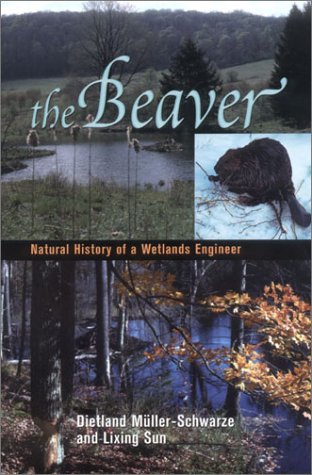 Too much good news. Some days there is almost nothing to cover, and other days everything good seems to happen at once. Yesterday I found out for the first time that Patti Smith keeps a blog about her observations of wildlife. You might remember she was the gentle soul keeping an eye on the beavers of Popples Pond in Vermont. She brought some helpers to the snowy stream to reinforce their food supply yesterday.
Too much good news. Some days there is almost nothing to cover, and other days everything good seems to happen at once. Yesterday I found out for the first time that Patti Smith keeps a blog about her observations of wildlife. You might remember she was the gentle soul keeping an eye on the beavers of Popples Pond in Vermont. She brought some helpers to the snowy stream to reinforce their food supply yesterday.![]()
This afternoon, Margaretta and Isabelle arrived to help the stranded beavers with an offering of poplar boughs from their home in Dummerston. Once at the pond, I call to Willow and then we all sit quietly on the upside-down sled hoping that Willow won’t think it too early to come out to visit. After a few minutes, David, the lucky dad of these two great girls, spots Willow hauling herself onto the ice at one of the upstream holes.
 How much do you envy that child? Willow is such a good sport. If you’d like to read more of Patti’s adventures you should check out her blog and pick up a copy of “The beavers of Popples Pond“. You won’t be disappointed.
How much do you envy that child? Willow is such a good sport. If you’d like to read more of Patti’s adventures you should check out her blog and pick up a copy of “The beavers of Popples Pond“. You won’t be disappointed.
Now onto more good news and a fine article from Vancouver. Just in time for our urban beaver chapter, too.
Vancouver’s urban-beaver plan focuses on enhancing habitats
Several dozen beavers are thought to be living in Vancouver, some of them making themselves at home in restored marshland near the Olympic Village, and now the city’s park’s board has approved a strategy that will give them some company.
The Vancouver Park Board has approved a detailed strategy to enhance and expand coastlines, forests and wetlands across the city. The Biodiversity Strategy aims to restore 25 hectares of natural land by 2020 – much of it spread across various shorelines – as well as tackle forest restoration near the Fraser River.
“There’s lots of evidence that there are physical and mental benefits for those who access nature in their daily lives,” biologist Nick Page, of the parks board, said in an interview. “Compared to rural populations, there are few points of access to nature in the city.”
How wonderful is THAT. Of course wildlife is good for our physical and mental health. So good in fact that they might have lifted that sentence EXACTLY from my section of the chapter. I’m so envious of the beaver plan in Vancouver. The impressive thing is that they even have the chops to stand up to pressure like this.
“The problem comes when beavers start working on natural water courses,” said Wayne Goodey, a University of British Columbia lecturer with a background in animal psychology. “In general ecological principles, even a couple of animals can do a large amount of damage to the landscaping.”
Mr. Page, however, is confident that adaptation, not relocation, is the best strategy for these local beavers.
“There’s not really an opportunity for them to dam anything, and if they do, there’s very little chance of them flooding important infrastructure,” he said. “Relocation is very expensive, $10,000 each beaver. You can protect a lot of trees and clean out a lot of culverts for that price.”
My mind is reeling from this article. What a WONDEFUL response to beavers appearing in an urban environment, and to a pompus know nothing who pretends to understand that beavers are bad for creeks. Hrmph. Think of how much our chapter will help them justify this bold decision. I am so impressed with Mr. Page. He gets a letter.
And silly Mr. Goodey does too. He apparently understands neither animals nor psychology.
 Finally, I came across this yesterday and feel so irresponsible I hadn’t seen it months ago. Dietland is THE author on beavers and kind enough to donate two copies of his book to the silent auction at this year’s beaver festival. He also has done head-turning research on scent mounds, and if you ever wondered about this unique beaver behavior, you really should watch this all the way through. His video footage is fascinating.
Finally, I came across this yesterday and feel so irresponsible I hadn’t seen it months ago. Dietland is THE author on beavers and kind enough to donate two copies of his book to the silent auction at this year’s beaver festival. He also has done head-turning research on scent mounds, and if you ever wondered about this unique beaver behavior, you really should watch this all the way through. His video footage is fascinating.
Thank you Dr. Muller-Swarze for your lifetime of beaver research and for sharing it with us!
















































